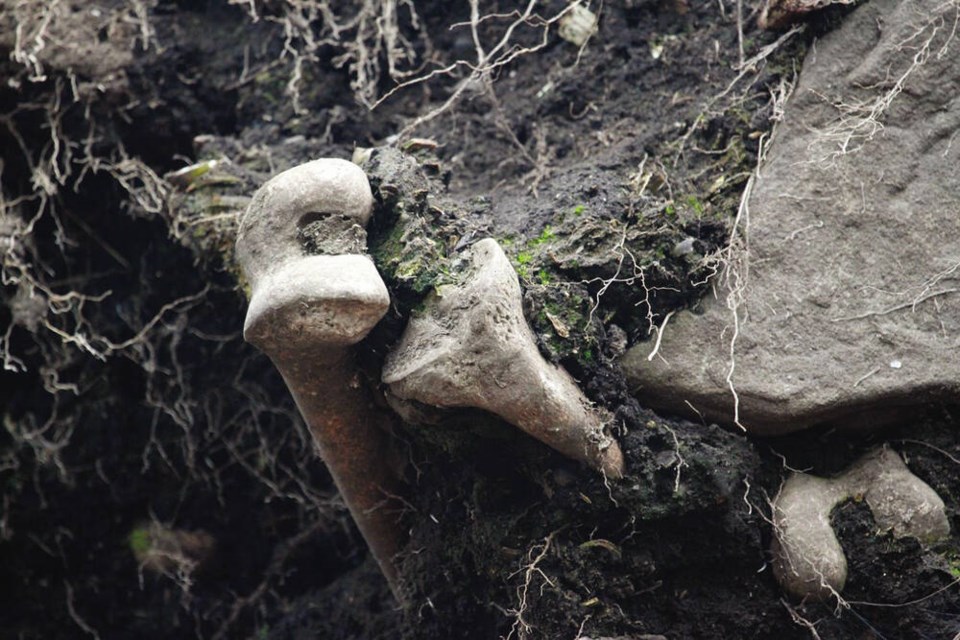The bank beneath a clifftop cemetery on Gabriola Island is slowly eroding, exposing the bones of some of the island’s first European inhabitants.
The Gabriola Community Cemetery sits atop a 10-metre cliff rising from a beach on the island’s south end. Soft shale in the top layer of that bank is sliding toward the ocean, unearthing remains believed to date to the late 19th century, said Jared Hooper, chairman of Gabriola Cemetery Trustees, which takes care of the cemetery.
“There’s little bits and pieces showing. It’s not a full skeleton,” Hooper said.
The exposed bones are believed to have been unearthed previously when a large chunk of the bank fell away in the mid-1960s, he said. They appear to have been reburied only about two feet deep.
Recognizing that the bank is disappearing, Hooper has sought advice from geologists, archaeologists and coastal erosion experts.
“They all had a look at it and said: ‘You’re never, ever going to stop that. You can throw a million dollars trying to shore that up and it would only last a few years,’ ” he said.
Four years ago, the edge of the bank extended more than a metre past a fence line, “but now it’s right at the fence,” Hoope said. “We’re losing about eight, nine inches a year.”
Instead of trying to fight the process, Hooper has installed a mesh basket under the exposed bones, hoping to catch anything that falls and eventually rebury it somewhere more secure.
Nothing has fallen yet, but Hooper said he can tell some bones are protruding about five inches more than they were about a year ago.
The affected area, known as Pioneer Cemetery, contains the remains of some of the first European men to settle in Gabriola and their wives, some of whom were likely Indigenous, Hooper said.
Magnus Edgar, a Scottish immigrant, donated the land for the cemetery when his wife died in 1882. “Unfortunately there’s very few records from way back, or even up until the ’60s or so. Nobody kept any records. I’m having to guess at a lot of history,” Hooper said.
A Victoria cemetery has also had to contend with the elements.
Before a sea wall was built to protect Victoria’s Ross Bay Cemetery in the early 1900s, “there were stories of coffins floating out to sea and children playing with the bones of people whose graves had been washed away by the storms,” according to the Old Cemeteries Society of Victoria’s website.
>>> To comment on this article, write a letter to the editor: [email protected]



